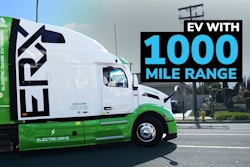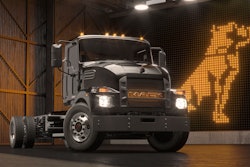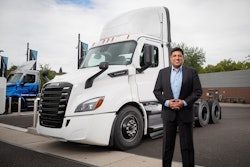Gators are not just in Florida.
I encountered more than a few road gators recently driving 1,350 miles through three northwest states on a range of interstates and state highways. I had time to think about one of the more recent concerns making headlines: that zero-emission vehicles, because they weigh more, are creating more airborne particulate matter from daily tire wear-and-tear. Particulates are not the alligator-sized tire carcasses I saw scattered across the highways, but microscopic particulates. More simply, tire dust.
Tire dust is a valid topic of study. The reason your tires need replacement is usually because they wear down with miles. When you started the tire had more than 10/32” (8 mm) of depth, but that went somewhere as you wore the tire down to 4/32” (3 mm) over the miles. Brake dust also seems like a logical addition to emission concerns to go with tires as we research how we impact our environment. More on that later.
The argument on tire dust is that battery electric vehicles (BEVs) weigh more than their internal combustion counterparts so the tires wear much faster. Parallel arguments are that the better acceleration and stopping that BEVs enable also contribute to faster wear of the tread depth. These concerns are valid enough that tire manufacturers like Goodyear are starting to develop new treads and tire compounds specifically for electric vehicles. The U.S. Tire Manufacturers Association is just one example that highlights work on tire particulate solutions.
Certainly, tires that have been optimized for decades for internal combustion engine (ICE) vehicle duty cycles are not yet optimized for recent zero-emission ones driven by electric motors. It may take a few years for the tire industry to figure out appropriate solutions for optimizing for BEV tire life
The Department of Energy (DOE) SuperTruck I and II programs starting in 2009, and the Environmental Protection Agency (EPA) SmartWay program started in 2002, confirm my faith that the tire industry is very capable of rising to technical challenges. These efforts focused on dramatically improving tires by improving their coefficient of rolling resistance (Crr). Background on Crr can be found at SmartWay’s discussion of low rolling resistance tires (LRR). SmartWay claims LRR tires can achieve a 3% fuel economy improvement. SuperTruck I programs were able to achieve a 20% or greater improvement in Crr contributing to a more than 6% improvement in freight efficiency just by adopting low rolling resistance tires.
Those MPG and freight efficiency improvements mean less greenhouse gas (GHG) and particulate emissions from ICE-powered trucks. Do these LRR tires wear faster and contribute to more tire particulates? A 2019 CCJ article by Jason Cannon quoted Mike Grabber, director of sales-commercial truck tires, “LRR tire usually starts with less tread depth off of the rack. The rubber itself doesn’t actually wear measurably faster.” Cannon goes on to quote Chuck Luther, Northeast sales manager for Triangle Tire USA. “In most cases today, LRR tires are capable of achieving comparable or better overall mileage than conventional non-LRR tires.”
One of the challenges the North American Council for Freight Efficiency (NACFE) encounters regularly is the “one size fits all” argument; that all semi-trucks are long haul, and they all operate at maximum weight all the time. It’s a grossly incorrect simplification of an extremely complex and diverse freight industry. But that argument seems to “play in Peoria.”
The reality is that less than 10% of semi-trucks drive at maximum weight and even fewer drive 600 miles or more per day. For some background on that, see NACFE’s reports More Regional Haul – An Opportunity for Trucking? and The Feasibility of Intentional Pairing.
For the sake of argument, let’s go with the assumption that all trucks operate at maximum weight and travel 600 miles per day. Do the tires then care if the truck and/or trailer are zero emission? Which weighs more, a pound of gold or a pound of feathers?
Further, does the regenerative braking of electric trucks extend brake life sufficiently that brake dust is mitigated so much so that it offsets any additional tire dust created by rapid acceleration wear? Which is worse, tire particulates or brake particulates? Which is worse for disadvantaged communities near freight traffic? The topic is a bit more complex than the sound bites and headlines might imply.
Then there are the inevitable arguments about cost. Do electric vehicles go through tires so quickly that they negate the cost savings from using cheap electricity versus diesel fuel? Is the total life cycle cost of the truck, both measured in dollars and emissions, including manufacturing and disposing of its tires over its lifetime, actually increased or decreased compared to its diesel counterpart?
And if tire particulates are an issue for zero-emission trucks, aren’t they also an issue for diesel-powered ones? Shouldn’t we be concerned about all the vehicles running on tires? Should bicycle ridership, which has been laudably increasing, also be concerned about the negative effects of tire wear? How about fork lifts, grocery carts, running shoes? Maybe trains are the go-to solution with their steel wheels eliminating the problem entirely? The topic of tire wear can raise many questions.
All are pertinent questions, even the more whimsical ones. In the long run though, my money is on the engineers to make zero-emission vehicles successful and to improve tires. Part of this is admittedly pure faith in the ability of engineers to do what, to some, may seem impossible. Countless times over the last 50 years arguments that various technologies were too costly, too onerous, too impractical, too futuristic, and on and on have been proven wrong. Sure, some of those points were temporarily correct. Those arguments, though, inherently bet against the engineers and scientists. They bet against the innovators and the risk takers. They side with the status quo – "just keep it the way it is" – like there is no room for improvement. That view really sells people short. In the end, it’s people that make technologies work.
In 1990, before the trucking industry got into electronic engine controls and the EPA began ramping up emissions requirements, the average fuel economy of semi-trucks hovered somewhere between 5 and 6 MPG according to a University of Texas Center for Transportation Research report. Today, new diesel trucks from multiple OEMs, fully loaded on long haul routes, are capable of exceeding 10 MPG while meeting or exceeding current GHG and particulate emissions requirements. In 2010, many people did not think zero- emission Class 8 trucks were feasible. Yet Run on Less – Electric DEPOT is showing multiple locations where they are now in use, at scale.
Tire and brake particulates are factors to improve as we migrate towards a zero-emission freight future, but I expect the innovators will find solutions. Measuring the problem is always the first step in solving it.













